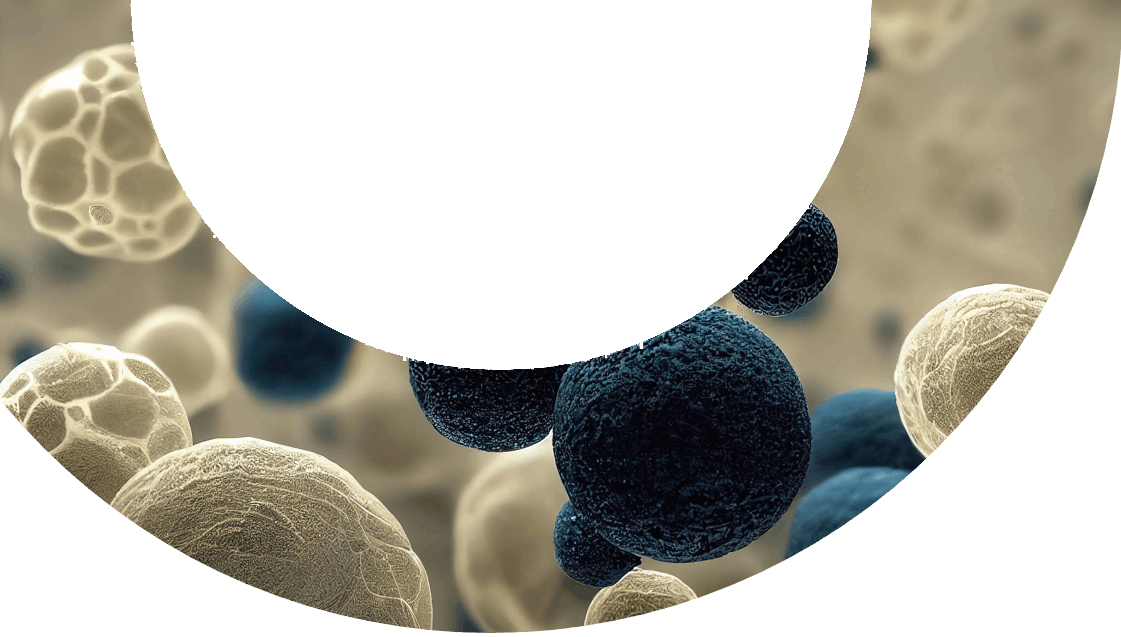

Microorganisms (MOs) in QPS
This section provides information on the steps that should be followed for a market authorisation application.
What does it mean if a microorganism (MO) has QPS status?
It means that all microbial strains belonging to that QPS taxonomic unit (TU) (at species level for bacteria, yeasts, and microalgae/protists and family level for viruses), included in an application for market authorisation, also have the same QPS status. A “qualified presumption of safety” (QPS) status provides a harmonized safety assessment approach used by EFSA that covers safety concerns for human, animals and the environment.
How does this affect my application?
Whenever foreseen by the specific sectorial EFSA guidance document, a simplified evaluation can be done with fewer requirements in relation to the risks that might be associated with the microorganism (MO). Strains belonging to QPS taxonomic units (TUs) still require a safety assessment based on a specific data package to be carried out by EFSA’s scientific Panels; however QPS status facilitates a simplified evaluation. Requirements for the different regulated products can be found here.
How do I proceed?
The requirements for the preparation of an application for the authorisation of a regulated product, including the characterisation of microorganisms (MOs), depend on applicable sectorial Regulation and EFSA guidance documents.
More information is available here.
In case further clarifications are needed, ask a question here.
Reasons for excluding a microorganism (MO) from future QPS assessment
Some microbial groups can be excluded from the QPS assessment because of an ambiguous taxonomic position or the possession of potentially harmful traits by some strains (e.g., pathogenicity, presence of virulence factors or production of biologically active toxic secondary metabolites) and it is considered unlikely that any MOs within these groups would be granted QPS status in the foreseeable future.
What does it mean when a microorganism (MO) is excluded from the QPS list?
This does not mean that a product containing such a MO will not be granted market authorisation. It means that a full safety assessment by EFSA will be required.
How do I proceed?
The requirements for the preparation of an application for the authorisation of a regulated product, including the characterisation of microorganisms (MOs), depend on applicable sectorial Regulation and EFSA guidance documents.
Detailed information can be found in the dedicated EFSA section here.
In case further clarifications are needed, ask a question here.
Reasons a microorganism (MO) is not in the QPS list
A MO is not in the QPS list either because it was never assessed before or because following its QPS assessment, QPS status was not granted.
- MO has no QPS status because it has never been assessed:
EFSA initiates the QPS process only upon receipt of an application for market authorisation, i.e., MOs that are not notified, are not assessed.
- MO assessed and no QPS status is granted:
There are three main reasons why following to an QPS assessment a MO is not granted QPS status:
Ambiguous taxonomic position:
The first step of the QPS assessment consists in checking if the name of the MO to be assessed exists as an official TU in accordance with recent international taxonomical insights. If it does not exist, QPS status cannot be granted to that MO.
Lack of a sufficient body of knowledge:
This means that there are no studies/articles published related to the MO (no body of knowledge including history of use).
If a new notification of the same MO is received after publication of the last Biological Hazards (BIOHAZ) Panel opinion, the QPS assessment is repeated. If in the meantime new studies are published validating the safety of the MO in question, QPS status is granted if all the other criteria are met.
Potentially harmful traits (e.g., pathogenicity, presence of virulence factors or production of biologically active toxic secondary metabolites):
These MOs require a full safety assessment at strain level by EFSA. If EFSA considers unlikely that any TUs within these groups would be granted QPS status in the near future, it may recommend that these microbial groups are excluded from the QPS process.
What does it mean when a microorganism (MO) does not have QPS status?
This does not mean that a product containing such a MO will not be granted market authorisation. It means that a full safety assessment by EFSA is always required.
How do I proceed?
The requirements for the preparation of an application for the authorisation of a regulated product, including the characterisation of microorganisms (MOs), depend on applicable sectorial Regulation and EFSA guidance documents.
Detailed information can be found in the dedicated EFSA section here.
In case further clarifications are needed, ask a question here.
QPS FAQs
The genus Lactobacillus has been recently divided into 25 new genera, based on phylogenetic, phenotypical and habitat differences shown by its 261 member species, while their species names are retained. Consequently, the 37 species that have QPS status were reclassified into 13 genera.
All strains belonging to a previous designed Lactobacillus species were transferred to the new species.
It is suggested to use the most recent nomenclature, however, former taxonomic classifications can be specified as well.
You may find the previous and current designations of the QPS Lactobacillus species here:
https://efsa.onlinelibrary.wiley.com/doi/epdf/10.2903/j.efsa.2020.6174
Bacilli are an extremely heterogeneous group within the phylum Firmicutes, exhibiting great phylogenetic and phenotypic diversity. The species traditionally included important agents in industrial microbiology (antibiotic and enzyme producers), food (pathogens, spoilage, and fermentation agents), feed additives and plant protection products. The systematics of the genus Bacillus have been recently revised and several changes have been proposed to clarify the evolutionary relationships and taxonomic structure.
It is suggested to use the most recent nomenclature, however, former taxonomic classifications can be specified as well.
You may find the previous and current designations of the QPS Bacillus species here:
https://efsa.onlinelibrary.wiley.com/doi/epdf/10.2903/j.efsa.2022.7045
The QPS status of a microbial taxonomic unit (TU) provides a simplified safety assessment of microbial strains belonging to that TU. Examples are strains used as zootechnical additives and food and feed additives, but also their enzymes and compounds used as flavourings. If residues, impurities, or degradation products linked to the total production process of these products do not give rise to concern, data on the safety of the target organism and toxicological data would not be required. Strains belonging to QPS status TU still require an assessment based on a specific data package as is requested by the respective guidance documents for the different application areas (e.g., data confirming the taxonomic identification as belonging to the QPS TU and data confirming that eventual qualifications are met).
Specific information on applications and updated guidance documents for each regulated product area can be found here: https://www.efsa.europa.eu/en/applications
In case further clarifications are needed, ask a question here: https://www.efsa.europa.eu/en/applications/askaquestion
For some taxonomic unit (TUs), data are lacking on the direct exposure of humans and animals to viable cells, while there is a documented body of knowledge on the safety of their fermentation products and/or their biomasses in the food and/or feed chain. This qualification implies the absence of viable production organisms in the final product and is also applicable to food and feed products based on the non-viable biomass of the microorganism. The qualification needs to be met by delivering data confirming the absence of viable cells of the microorganism being considered in the application.
EFSA guidance on how to assess the microbiological requirements to undertake the risk assessment approach based on QPS is available at:
https://efsa.onlinelibrary.wiley.com/doi/epdf/10.2903/j.efsa.2018.5206https://efsa.onlinelibrary.wiley.com/doi/epdf/10.2903/j.efsa.2021.6851https://efsa.onlinelibrary.wiley.com/doi/epdf/10.2903/j.efsa.2021.6506
The “list of microorganisms with QPS status” first established in 2007, has been revised and updated annually until 2014 via QPS Opinions; since 2014 the updates are carried out and published every 3 years. If new information is retrieved from extended literature searches (ELS) that would change the QPS status of a taxonomic unit (TU) or its qualifications, this is also published in the QPS Panel Statement (PS) covering a previous 6-month period.
The PS also includes the evaluation of microbiological agents notified to EFSA within the 6-month period for possible QPS status, for applications for market authorisation of feed additives, food additives, food enzymes, food flavourings, novel foods, and plant protection products (“regulated products”).
In the “Virtual issue” dedicated to QPS, you may find more information: https://efsa.onlinelibrary.wiley.com/doi/toc/10.1002/(ISSN)1831-4732.QPS
In the “Topics” section dedicated to QPS, you may find the latest publications on QPS assessment as well general information: https://www.efsa.europa.eu/en/topics/topic/qualified-presumption-safety-qps
The current valid “list of microorganisms with QPS status” can be found here: https://doi.org/10.5281/zenodo.1146566
The list of “microbiological agents as notified to EFSA” can be found here: https://doi.org/10.5281/zenodo.3607183
Products composed of viable microorganisms intended to be used in animal feed (including the so-called “probiotics”) according to Regulation (EC) 1831/2003 on additives for use in animal nutrition, require an EFSA risk assessment and are, on receipt of the application at EFSA, assessed for possible introduction to the QPS list. Human “probiotics” are not regulated as such and would not be QPS assessed when they are not introduced as a novel food or as a genetically modified microorganism. In the framework of Regulation (EC) No 1924/2006 on health claims made on foods (including microorganisms (e.g., bacteria and yeast), the Panel on Nutrition, Novel Foods and Food Allergens (NDA) is responsible for verifying the scientific substantiation (efficacy assessment) of submitted health claims based on data made available to EFSA (i.e., the applications provided by applicants). Under this framework, it should be noted that a safety assessment is not foreseen. However, where relevant, the NDA Panel may recommend restrictions of use based on safety considerations. Decisions regarding the authorisation of health claims, including the final wording and the conditions/restrictions of use, are taken by risk managers (i.e. the European Commission and Member States). In order to make such decisions, risk managers may take into account other legitimate factors, such as safety aspects (e.g. to modify the conditions/restrictions of use), in addition to EFSA’s scientific evaluation.
You may find more information at:
https://www.efsa.europa.eu/en/efsajournal/pub/6553https://www.efsa.europa.eu/en/applications/nutrition
